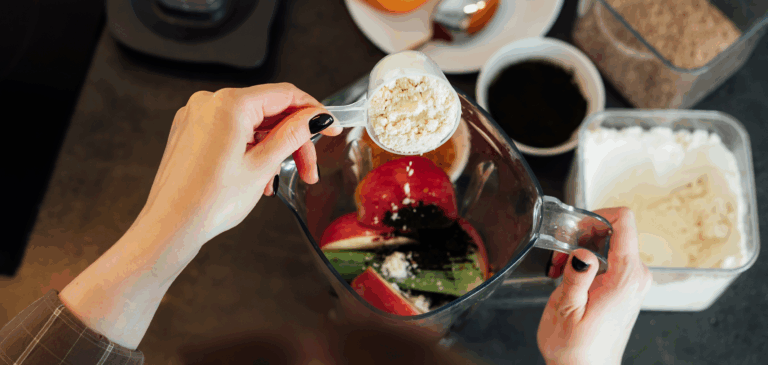Ashwagandha: Herbal Role in Stress
Summary
Ashwagandha, also known as Indian ginseng, King of Ayurveda, and winter cherry, is an adaptogen and has been used to relieve stress, increase energy levels, and improve concentration.
What is Ashwagandha?
Ashwagandha (Withania somnifera) is an ancient medicinal herb of the Solanaceae family and is also known as Indian ginseng, King of Ayurveda, and winter cherry. This herb has been classified as “rasayana” in ayurvedic medicine for being used as a general tonic for natural healing and in modern terms as an “adaptogen”.1-5
The Ashwagandha plant is a small shrub with yellow flowers, native to India and North Africa. The extracts of Ashwagandha or powder from its roots and leaves are used to treat a variety of physiological disorders, including burns and wounds. It has been used for over 3,000 years as ayurvedic and indigenous medicine to relieve stress, increase energy levels, and improve concentration.1-3
The roots are a constituent of many formulations in Ayurvedha, Siddha, and Unani medicine. Further, Withania appears in World Health Organization (WHO) monographs “Selected Medicinal Plants” and “The American Herbal Pharmacopoeia.”4 The main chemical constituents are tropane alkaloids and steroidal0 lactones (withanolides, mainly withaferin A). Tropine is a derivative of tropane (3-tropanol), a building block of atropine and an anticholinergic drug.
Clinical Benefits of Ashwagandha
Several human and animal studies have elucidated signaling pathways linked to Ashwagandha via physiological and molecular targets. These health benefits include:5-16
- Blood sugar reduction
- Reduced cortisol levels
- Stress alleviation
- Depression and anxiety reduction
- Effective endurance and physical performance
- Boosted fertility in men
- Reduced inflammation
- Improved cardiovascular health by lowering C-reactive proteins
- Cholesterol and triglyceride balance
- Improved brain function and memory properties
Relevant Clinical Studies
Some supplementation studies in chronically stressed adults have shown a significant reduction in cortisol.7 This herb has also been shown to reduce stress and anxiety in animal and human studies.8,9 Also, scientific literature indicates the detoxification potential of Ashwagandha.10-12 Supplementation studies have shown to enhance fertility in men.13 A safety and efficacy study in healthy men with 750-1250 milligrams (mg) per day supplementation indicated a gain in muscle mass and reduction in body fat.14
Further, studies in humans have found that oral supplementation of 250 mg Ashwagandha per day resulted in a 36 percent decrease in C-reactive Protein (CRP) compared to a placebo group.15 Additionally, with Ashwagandha supplementation of 500 mg per day, researchers observed improved task performance in men.16 In general, the consumption of Ashwagandha products by healthy subjects and patients resulted in no documented safety concerns with recommended daily dosage of 450-500 mg root extract or powder at one or two servings.16
- Drugs.com. (2009).
- US National Library of Medicine. (2017). Ashwaghanda. MedlinePlus.
- Mirjalili, M.H., Moyano, E., Bonfill, M., et al., (2009). Steriodal lactones from Withania somnifera, an ancient plant for novel medicine. Molecues. 14(7): 2372-93. doi: 10.3390/molecules14072373.
- Marderosion, A.D. (2001). The review of natural products, facts and comparisons.
- Kulkarni, S.K., Dhir, A. (2008). Withania somnifera: An Indian ginseng. Prog Neuropsychopharmacol Biol Psychiatry. 12(6):455-63. doi: 10.1177/1534735413490233.
- Baliga, M.S., et al. (2013). Rasayana drugs from the ayurvedic system of medicine as possible radioprotective agents in cancer treatment. Integr Cancer Ther.
- Auddy, B., Hazra, J., Mitra, A., et al.
- Chandrasekhar K, Kapoor J, Anishetty S. (2012). A prospective, randomized double-blind, placebo-controlled study of safety and efficacy of a high-concentration full-spectrum extract of ashwagandha root in reducing stress and anxiety in adults. Indian J Psychol Med.
- Andrade, C., Aswath, A., Chaturvedi, S.K., Srinivasa, M., & Raguram, R. (2000). A double-blind, placebo-controlled evaluation of the anxiolytic efficacy ff an ethanolic extract of withania somnifera. Indian J Psychiatry, 42(3):295-301.
- Bharavi, K., et al. (2011). Prevention of cadmium bioaccumulation by herbal adaptogens. Indian J Pharmacol.
- Bharavi, K., et al. (2010). Reversal of Cadmium-induced Oxidative Stress in Chicken by Herbal Adaptogens Withania Somnifera and Ocimum Sanctum. Toxicol Int.
- Sharma, V., Sharma, S., Pracheta. (2012). Protective effect of Withania somnifera roots extract on hematoserological profiles against lead nitrate-induced toxicity in mice. Indian J Biochem Biophys.
- Shukla, K.K., et al. (2011). Withania somnifera improves semen quality by combating oxidative stress and cell death and improving essential metal concentrations. Reprod Biomed Online, 22(5):421-7. doi: 10.1016/j.rbmo.2011.01.010.
- Wankhede, S., Langade, D., Joshi, K., Sinha, S.R., Bhattacharyya, S. (2015). Examining the effect of Withania somnifera supplementation on muscle strength and recovery: a randomized controlled trial. J Int Soc Sports Nutr., 25;12:43. doi: 10.1186/s12970-015-0104-9.
- Auddy, B., Hazra, J., Mitra, A., Abedon, B., & Ghosal, S. (2008). A standardized Withania somnifera extract significantly reduces stress-related parameters in chronically stresses humans: A double-blind, randomized, placebo-controlled study. JANA., 11(1).
- Pingali, U., Pilli, R., & Fatima, N. (2014). Effect of standardized aqueous extract of whithania somnifera on tests of cognitive and psychomotor performance in healthy human participant. 6(1): 12-8.







